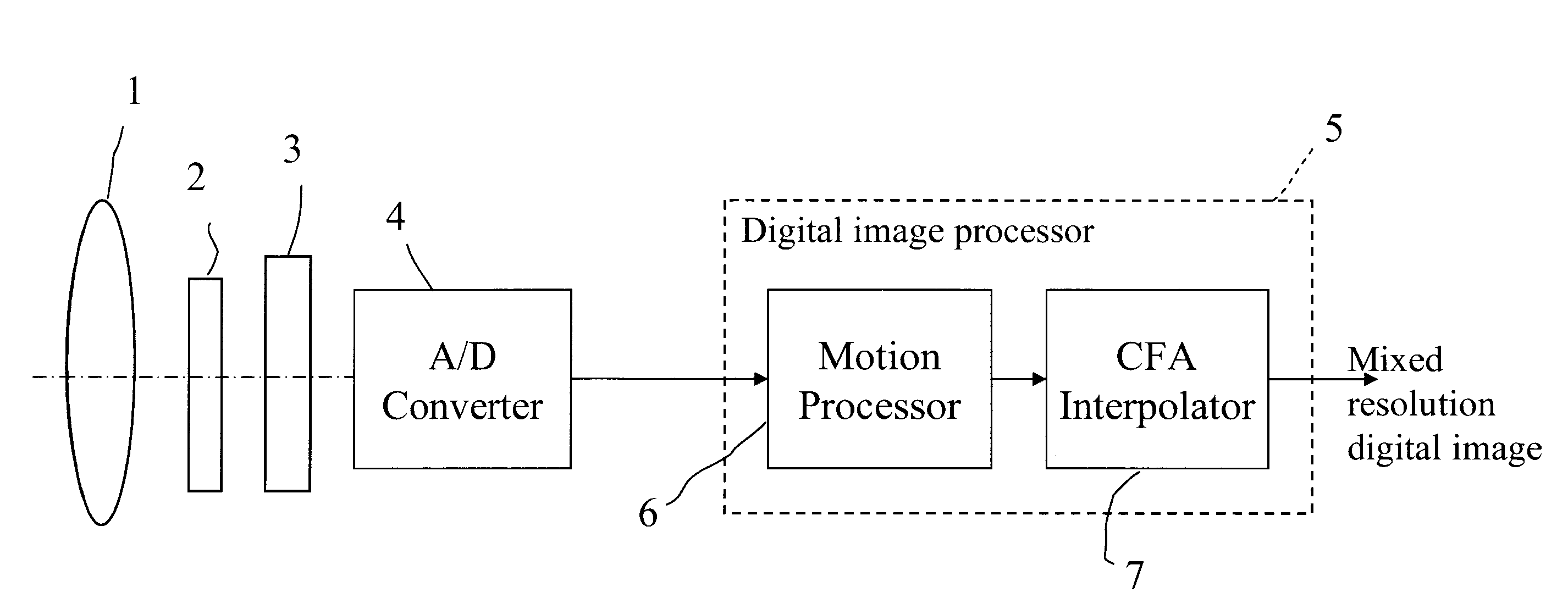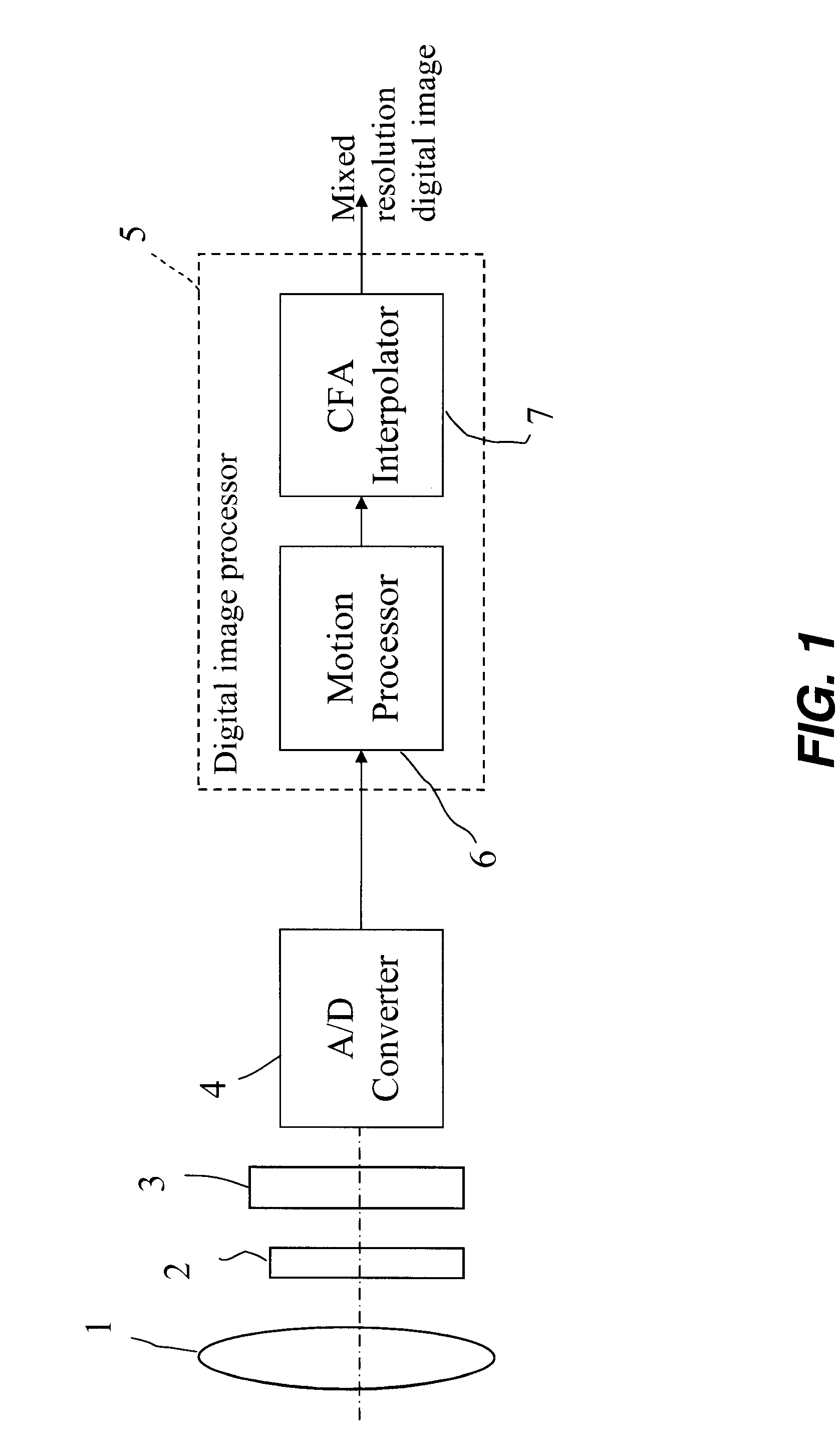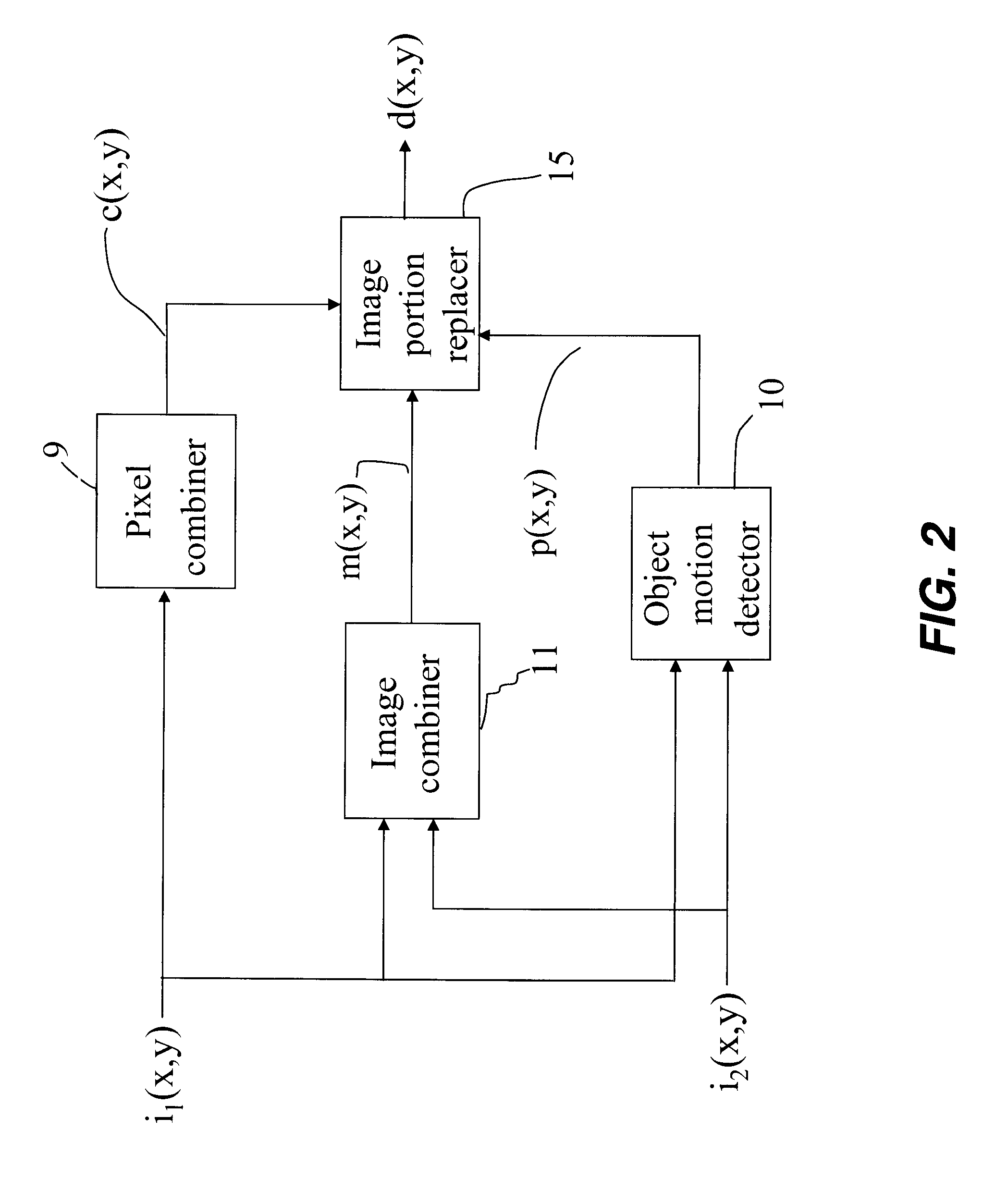Digital image with reduced object motion blur
- Summary
- Abstract
- Description
- Claims
- Application Information
AI Technical Summary
Benefits of technology
Problems solved by technology
Method used
Image
Examples
Embodiment Construction
[0022]A digital image includes one or more digital image channels. Each digital image channel includes a two-dimensional array of pixels. Each pixel value relates to the amount of light received by an electronic image sensor corresponding to the geometrical domain of the pixel. For color imaging applications, a digital image will typically consist of red, green, and blue digital image channels. Other configurations, such as using cyan, magenta, and yellow image channels, are also practiced. For monochrome applications, the digital image consists of one digital image channel. Those skilled in the art will recognize that the present invention can be applied to, but is not limited to, a digital image for any of the above-mentioned applications.
[0023]Although the present invention describes a digital image channel as a two-dimensional array of pixel values arranged by rows and columns, those skilled in the art will recognize that the present invention can be applied to mosaic (non-recti...
PUM
 Login to View More
Login to View More Abstract
Description
Claims
Application Information
 Login to View More
Login to View More - R&D
- Intellectual Property
- Life Sciences
- Materials
- Tech Scout
- Unparalleled Data Quality
- Higher Quality Content
- 60% Fewer Hallucinations
Browse by: Latest US Patents, China's latest patents, Technical Efficacy Thesaurus, Application Domain, Technology Topic, Popular Technical Reports.
© 2025 PatSnap. All rights reserved.Legal|Privacy policy|Modern Slavery Act Transparency Statement|Sitemap|About US| Contact US: help@patsnap.com



